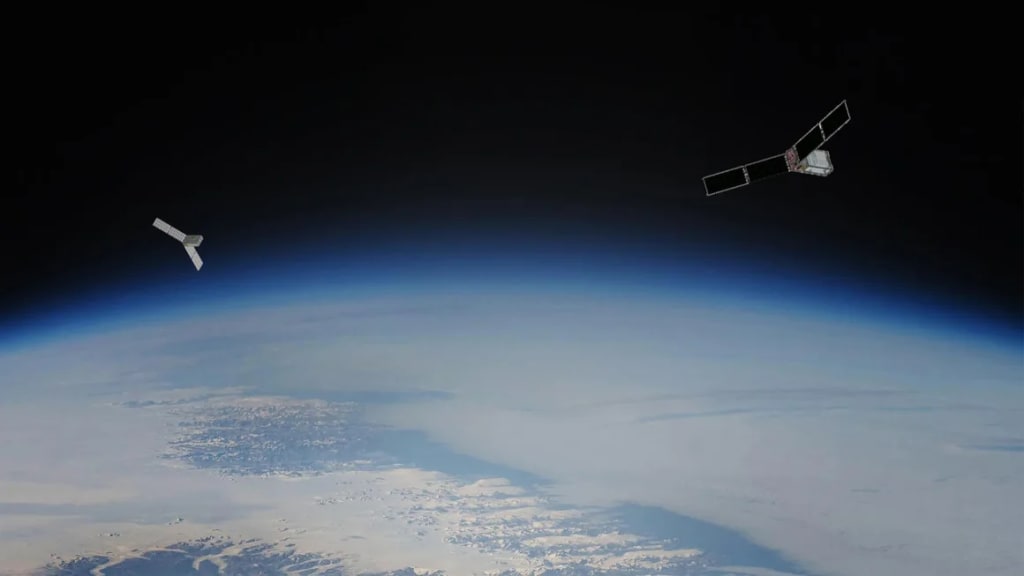NASA PREFIRE Mission Launches to Study Earth’s Polar Regions
NASA's Polar Radiant Energy in the Far InfraRed Experiment (PREFIRE) mission is set to revolutionize our understanding of Earth's polar regions. As climate change accelerates, the polar regions, especially the Arctic, are undergoing rapid transformations. These changes have significant implications for global weather patterns, sea level rise, and the overall health of our planet. The PREFIRE mission aims to fill critical gaps in our knowledge by studying the polar regions' radiant energy, particularly in the far-infrared spectrum.

NASA's Polar Radiant Energy in the Far InfraRed Experiment (PREFIRE) mission is set to revolutionize our understanding of Earth's polar regions. As climate change accelerates, the polar regions, especially the Arctic, are undergoing rapid transformations. These changes have significant implications for global weather patterns, sea level rise, and the overall health of our planet. The PREFIRE mission aims to fill critical gaps in our knowledge by studying the polar regions' radiant energy, particularly in the far-infrared spectrum.
The PREFIRE mission comprises two CubeSats, each about the size of a shoebox, designed to measure the far-infrared radiation emitted from Earth. This part of the electromagnetic spectrum, which lies beyond the visible and near-infrared, is crucial for understanding how much heat is being absorbed and emitted by the Earth's surface and atmosphere. Current satellite instruments do not adequately capture this far-infrared radiation, leaving a significant blind spot in our climate models.
One of the primary goals of the PREFIRE mission is to improve climate models by providing more accurate data on the energy balance of the polar regions. The energy balance, or the difference between incoming and outgoing energy, is a fundamental aspect of Earth's climate system. By measuring the far-infrared radiation, PREFIRE will help scientists understand how much energy is being trapped by greenhouse gases and how much is being radiated back into space.
The Arctic, in particular, is warming at more than twice the rate of the rest of the planet. This phenomenon, known as Arctic amplification, has far-reaching effects. Melting ice sheets and glaciers contribute to sea level rise, while the loss of sea ice affects global weather patterns by altering atmospheric circulation. By providing detailed data on the energy dynamics of the Arctic, PREFIRE will help scientists predict future changes more accurately and understand the mechanisms driving these rapid transformations.
PREFIRE's innovative use of CubeSats marks a significant advancement in satellite technology. These small, cost-effective satellites can be launched more frequently and at a fraction of the cost of traditional satellites. Each PREFIRE CubeSat is equipped with a highly sensitive radiometer that can detect tiny changes in far-infrared radiation. The mission will involve these CubeSats orbiting Earth and collecting data over the course of 10 months, covering all seasons and capturing the dynamic changes in the polar regions.
The data collected by PREFIRE will be invaluable for several reasons. First, it will improve our understanding of the polar regions' role in Earth's climate system. These regions act as the planet's refrigerator, helping to regulate global temperatures. Any changes in their energy balance can have cascading effects on the global climate. Second, the data will enhance our ability to predict extreme weather events. The polar regions influence weather patterns far beyond their borders, and better data will lead to more accurate forecasts.
Moreover, PREFIRE's findings will be crucial for validating and improving climate models. Current models often struggle to accurately simulate the polar regions due to the lack of comprehensive data. By filling this gap, PREFIRE will enable more reliable projections of future climate scenarios, aiding policymakers and researchers in developing effective strategies to mitigate and adapt to climate change.
The PREFIRE mission also exemplifies international collaboration in climate science. NASA is working closely with scientists from around the world to ensure that the data collected is widely accessible and used to its fullest potential. This collaborative approach is essential for addressing global challenges like climate change, which know no borders.
In conclusion, NASA's PREFIRE mission is a groundbreaking endeavor that will significantly enhance our understanding of Earth's polar regions. By focusing on the far-infrared spectrum, PREFIRE addresses a critical gap in our climate knowledge, providing essential data to improve climate models and predictions. As the polar regions continue to change rapidly, the insights gained from PREFIRE will be crucial for understanding and mitigating the impacts of climate change on our planet. This mission underscores the importance of innovative technology and international collaboration in advancing climate science and protecting Earth's fragile ecosystems.
About the Creator
Raju Moses
I am a fascinating Writer of all available trending topic in the world.
Enjoyed the story? Support the Creator.
Subscribe for free to receive all their stories in your feed. You could also pledge your support or give them a one-off tip, letting them know you appreciate their work.





Comments (1)
Hey, just wanna let you know that this is more suitable to be posted in the FYI community 😊